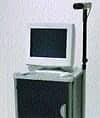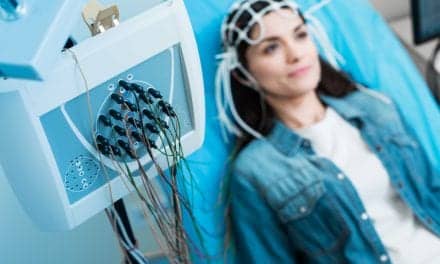Comparing auto-adjust nasal CPAP devices’ responses to simulated breathing patterns reveals that products have changed more over time than many clinicians suspect.
Sleep medicine is a rapidly evolving field, especially in the area of treatment technologies. New sleep therapy products enter the market quickly and are accepted by sleep therapy professionals quickly. In many cases, however, there are few standards for the development of these new products and medical professionals see little peer-reviewed research on the application, benefits, and potential long-term outcomes of the new products.
One example of this is auto-adjusting (AA) nasal CPAP. In the past 4 years, manufacturers have introduced several new and updated AA devices, all of which are designed to detect a variety of sleep disordered breathing patterns and vary the amount of positive airway pressure delivered to the patient to eliminate upper airway obstruction. However, since a consensus does not exist in the sleep medicine community regarding appropriate therapeutic as well as diagnostic AA functionality in the clinical setting, manufacturers have generally determined on their own which breathing patterns are most relevant to affect patient therapy and designed their devices to respond best to these patterns. Furthermore, different proprietary algorithms used by different manufacturers may insert variability in how competing AA units change pressure in response to a patient’s breathing pattern.
Because we believe it is important for clinicians to understand what AA units respond to, how they respond with pressure changes, how fast the pressure response is (both positive and negative), what the limitations of various units are, and, finally, what the compensatory mechanisms of the different devices are, we began to conduct bench testing on the most popular AA products 4 years ago.
We chose bench testing with a mechanical breathing simulator because it is difficult to control all variables when testing medical products with patients. Even though the products were not responding to the myriad of potential patient scenarios, a controlled lung model could reproduce the exact same breathing signal for each product to determine comparative responses. In this way, we could contrast the comparative capabilities of various devices.
Each time we tested, information from previous testing improved our method of data collection. What remained the same was the input data. The exact same input data, originally created from digitized nasal pressure signals acquired during conventional polysomnography, was provided to the AA devices, and a noticeable change has occurred during this 4-year period in some products’ response to the airflow signals.
What Variability Means
We tested the most popular AA products on the market in 2001, 2002, and 2005. As older models were retired and new ones were introduced, we updated our test to assess the latest technologies. (These results are now published online at www.sleepreviewmag.com with the May/June 2006 issue.) Over the 4 years, we found that different devices varied markedly in their response to the four breathing patterns we tested them on: apnea, flow limitation, hypopnea, and normal breathing. Although auto-adjust nasal CPAP units are typically marketed as providing features and functions that are similar from manufacturer to manufacturer, these results indicated that this is not the case.

In a therapeutic application, clinicians expect that different patients will have varied experiences and outcomes. This may depend on the device they are treated with and the type or variation of sleep disordered breathing pattern they present with, which is not always a static condition. Patients’ needs also vary according to sleep position, lifestyle issues, medication intake, and weight gain/loss. This necessitates a different approach of treating the patient with a predictable, self-adjusting positive airway pressure system that responds to flow limitation, apneas, and hypopneas appropriately while allowing the patient to maintain an acceptable level of sleep, thus allowing them to comply with their therapy. Clinicians should be aware that each manufacturer’s device has a different algorithm, affecting its response to patient breathing patterns. Device selection may impact the efficacy of the treatment and should be conducted with the performance capabilities of each device in mind.

Furthermore, in diagnostic use, a statistical analysis of an AA pressure response is sometimes employed to determine a patient’s appropriate fixed CPAP pressure. Either a mean pressure, or a pressure below which the unit spends 90% to 95% of the time, is commonly used. The differences in the response of the various units could be expected to produce different values in this analysis and a different prescribing CPAP level.

What Clinicians Can Do
It is important to note that the primary objective of this research was to compare and contrast each auto-titrating device’s response to the presence of three abnormal breathing patterns and the response to a transition from abnormal to normal breathing. However, this project did not test the device’s ability to “correct” the patient’s sleep disordered breathing.

That being said, we feel that our results clearly show that AA devices have evolved during the past 4 years and, in some cases, improved in response to the signals that have remained consistent during the period of testing by our group. The 2005 test in particular showed that the units studied may have changed algorithms over the course of time. Identifying these changes raises a number of questions, which clinicians should have answered.
• Were the modifications made to correct a prior deficiency in performance?
• If the modifications were made to correct a prior deficiency in performance, should the previously prescribed units be recalled or replaced?
• What specific aspect of functionality was modified and what was the intended benefit to the end user?
• How was the unit tested/validated prior to release and is the validation data available for review?
Sleep therapy is a fast-moving and competitive market and new opportunities continue to be presented, yet if there is not a clinical base for the therapy, will the clinicians, patients, and payors continue to support new products and services that have not been documented? Clinicians need to challenge sleep therapy products manufacturers to show:
• How the product works with specifics on performance.
• Competitive capabilities based on independent testing.
• Clinical research on the capabilities, applications, and limitations of their product.
Robert McCoy, RRT, FAARC, is managing director of Valley Inspired Products, Apple Valley, Minn, a company that provides product testing and other services for the respiratory industry. Todd Eiken, RPSGT, is director of the Metropolitan Sleep Disorders Center, St Paul, Minn, and a member of Sleep Review’s Editorial Advisory Board. Their research received partial funding from ResMed, San Diego, in 2001, but has been otherwise independent. To gain access to the results of the studies, please see our May/June 2006 online edition at www.sleepreviewmag.com.
Manufacturers Respond
Respironics: We agree with Eiken and McCoy that the technologies used in the treatment of sleep disordered breathing are increasingly competitive and progress rapidly. Independent,  objective evaluation of any medical product is quintessential to patient safety and positive patient outcomes. It must be clearly understood by all clinicians and physicians that all auto-titrating algorithms are not the same. As seen in this report, simulated bench testing is a valuable tool that may be used to compare the behavior of device algorithms. However, the results from bench testing are heavily dependent upon the configuration of the test platform and the breathing patterns the devices are exposed to.
objective evaluation of any medical product is quintessential to patient safety and positive patient outcomes. It must be clearly understood by all clinicians and physicians that all auto-titrating algorithms are not the same. As seen in this report, simulated bench testing is a valuable tool that may be used to compare the behavior of device algorithms. However, the results from bench testing are heavily dependent upon the configuration of the test platform and the breathing patterns the devices are exposed to.
Bench testing is an important part in the development and validation of products. However, any bench model has limitations. For example, no human breathes in repetitive and identical 8-minute patterns. How does one relate the response of a device to this simulation to a given patient? The bench model does not take into account human responses such as changes in breathing effort and/or airway patency due to arousal from rapid changes in airway pressure, for example. The bench test is not a human test so any bench test results must be carefully interpreted.
Medical device manufacturers frequently make changes to their products. Changes to products are made on a regular basis to utilize improvements in technology, enhance manufacturing, or provide additional features. A faster microprocessor or a better measurement of airflow or pressure, for example, can result in changes in performance. The mere fact that changes occur, however, does not mean that prior devices were deficient or defective.
Automatically adjusting CPAP devices have been available for over a decade. There have been no widespread claims of these devices causing injury or threatening the health and welfare of patients being treated with them. Given the limitations of bench or simulator testing in general and specifically the authors’ model, to imply past, current, or future patients are at risk based upon these bench results is neither warranted nor in the best interest of patients and health care providers.
Bench testing device performance is based upon the waveform injected into the test and cannot be blindly extrapolated to replicate patient efficacy. Bench testing is a useful tool that provides a good explanation of how various devices behave in specified situations; however, when comparing the benefit of auto-titrating technologies, the focus must be placed upon clinical patient outcomes.
William Hardy, MPM, RRT Senior Clinical Research Coordinator Sleep and Respiratory Group, Respironics Inc, Murrysville, Pa
 ResMed: One of the major challenges that health care professionals face in treating sleep apnea patients is ensuring that patients are compliant with their therapy. Noncompliance creates health risks for patients and lost opportunities for businesses. Consequently, new insights on the issue of patient compliance benefit everyone involved in the business of sleep. ResMed believes that one of the most critical elements to ensuring compliance is patient comfort. More important, we believe that exceptional patient comfort should not compromise therapy effectiveness. Our AutoSet devices are built upon this foundation.
ResMed: One of the major challenges that health care professionals face in treating sleep apnea patients is ensuring that patients are compliant with their therapy. Noncompliance creates health risks for patients and lost opportunities for businesses. Consequently, new insights on the issue of patient compliance benefit everyone involved in the business of sleep. ResMed believes that one of the most critical elements to ensuring compliance is patient comfort. More important, we believe that exceptional patient comfort should not compromise therapy effectiveness. Our AutoSet devices are built upon this foundation.
As the Sleep Review independent study results reflect, ResMed’s AutoSet has performed consistently over time, through all three studies. AutoSet responds predictably and effectively to flow limitation, responding preemptively to prevent most obstructive events. In the study, when a mechanical device is repeatedly exhibiting flow limitation or obstructive hypopnea, the AutoSet algorithm responded promptly to increase the pressure to a suitable treatment level. Other devices in the study took more than 15 minutes to respond to repeated flow limitation with a significant pressure response (>1.5 cm H20), which most clinicians would find suboptimal. In clinical studies, the AutoSet flow limitation response has been shown to reduce apnea-hypopnea index to levels equivalent to manual titration without arousing patients.1
Regarding comfort, the Sleep Review study shows an exponential decrease in pressure upon cessation of the sleep disordered breathing event in all cases on the AutoSet. This allows the flow generator to swiftly decrease the pressure to a more comfortable setting without rousing the patient. Further to this point, other clinical studies have demonstrated that AutoSet devices provide treatment that is as effective or more effective than CPAP therapy, and that they provide this treatment at pressures averaging 37% lower than standard CPAP.2
AutoSet devices monitor breathing on a breath-by-breath basis and deliver the lowest pressure necessary to maintain airway patency for any given breath. AutoSet devices act preemptively by monitoring the patient’s inspiratory flow-time curve. Flow limitation typically precedes an upper airway obstruction, which will cause an apnea, hypopnea, or snoring. By monitoring and responding to flow limitation, AutoSet devices reduce the number of respiratory events and arousals. Studies suggest that using flow limitation is effective in responding to apneas and obstructive hypopneas directly and that clinicians should use flow limitation to achieve optimal pressure during titration.3,4
Comfort depends on a number of factors, including patient education, therapy follow-up, nasal interface comfort, and proper humidification. At ResMed, we take a comprehensive view of treatment in order to provide quality systems for lasting results for our customers and their patients. We encourage clinicians to take advantage of the tools available to them to improve their patients’ health and lives, and we encourage the industry to keep striving for compliance solutions.
References
1. Teschler H, Berthon-Jones M, Thompson AB, Henkel A, Henry J, Konietzko N. Automated continuous positive airway pressure titration for obstructive sleep apnea syndrome. Am J Respir Crit Care Med. 1996;154:734-740.
2. Teschler H, Berthon-Jones M. Intelligent CPAP systems: clinical experience. Thorax. 1998;53(3 suppl):S49-54.
3. Montserrat JM, Ballester E, Olivi H, et al. Time-course of stepwise CPAP titration. Behavior of respiratory and neurological variables. Am J Respir Crit Care Med. 1995;152:1854-1859.
4. Berthon-Jones M, Lawrence S, Sullivan CE, Grunstein R. Nasal continuous positive airway pressure treatment: current realities and future. Sleep. 1996;19(9 suppl): S131-5.
 Puritan Bennett: We commend the authors for their role in the evaluation of new and improved technology for sleep apnea therapy treatment. We also feel the authors raise appropriate questions and encourage clinicians to consider important clinical factors prior to choosing any device. In our review of the data supporting the article, however, we have noted some irregularities which we would like to point out.
Puritan Bennett: We commend the authors for their role in the evaluation of new and improved technology for sleep apnea therapy treatment. We also feel the authors raise appropriate questions and encourage clinicians to consider important clinical factors prior to choosing any device. In our review of the data supporting the article, however, we have noted some irregularities which we would like to point out.
The flow limitation graph seems to suggest that the Puritan Bennett GoodKnight® 420E CPAP device does not respond to flow limitations. In fact, the GoodKnight 420E offers clinicians two options: the ability to program the machine either to detect and react to flow limitation, or detect but not react to flow limitation. This allows the clinician to tailor the machine to individual patient needs. We believe that the GoodKnight 420E auto-adjusting device used in this study was inadvertently programmed not to react to flow limitation. Had the machine been properly programmed, the GoodKnight 420E device would have properly responded to flow-limited breaths.
Additionally, a review of the hypopnea graph would suggest that our machine reacts to hypopneas. In fact, our algorithm is designed not to respond to hypopneas without flow limitation. The Puritan Bennett GoodKnight 420E is designed to continuously track and react to flow limitations in a variety of modes. However, we feel a hypopnea without a flow limited breath does not warrant a pressure increase due to the probability that such an event may not be due to airway obstruction. We strongly believe that the Puritan Bennett GoodKnight 420E device appropriately balances patient comfort with clinical efficacy by adequately tracking and reacting to a variety of flow-limited breaths, apneas and snoring. In addition, certain features that distinguish our unit from the competition—such as the ability to detect cardiac oscillations—are entirely omitted from the study.
Finally, we find that the overall study report lacks certain basic research methods and disclosures. Thus, we cannot conclude that this article provides clinically valuable data and, in fact, may be misleading in important respects noted above. In addition, other limitations of this article include:
• inadequate discussion of the methodology used;
• inadequate discussion and interpretation of the data;
• no description of statistical methodology; aand
• exclusion of response to snoring data, which we believe is critical in determining upper airway restriction.
We can recommend several peer-reviewed articles for examples of rigorous scientific discussion regarding methodology and outcomes. One such article appears in the American Journal of Respiratory and Critical Care Medicine, Volume 166, 2002, pp 469-473 by Ramon Farre, et al, entitled “Response of Automatic Continuous Positive Airway Pressure Devices to Different Sleep Breathing Patterns: A Bench Study”. Another article is in the European Respiratory Journal, Volume 24, 2004, pp 649-658 by F. Abdenbi, B. Chambille, and P. Escourrou, entitled “Bench testing of auto-adjusting positive airway pressure devices”.
In conclusion, we reiterate that, while the intentions of the study are commendable, the poor execution and design of the study renders it not only clinically useless but as noted above, inaccurate in several important respects.
Rick Mendez on behalf of the Puritan Bennett Marketing Team
To download a PDF of Eiken and McCoy’s full report, including results of tests in 2001 and 2002, please click here.




